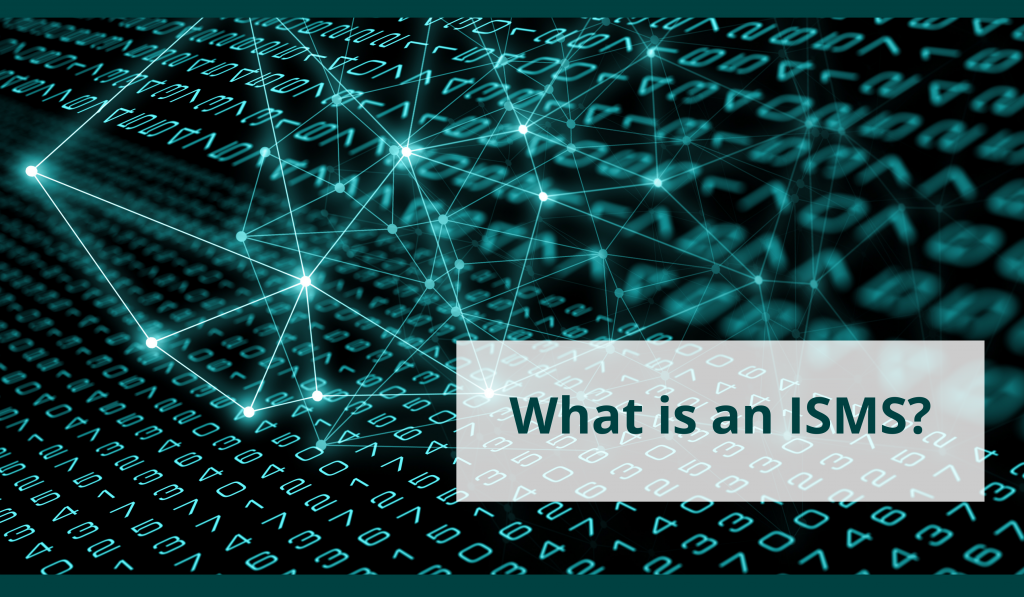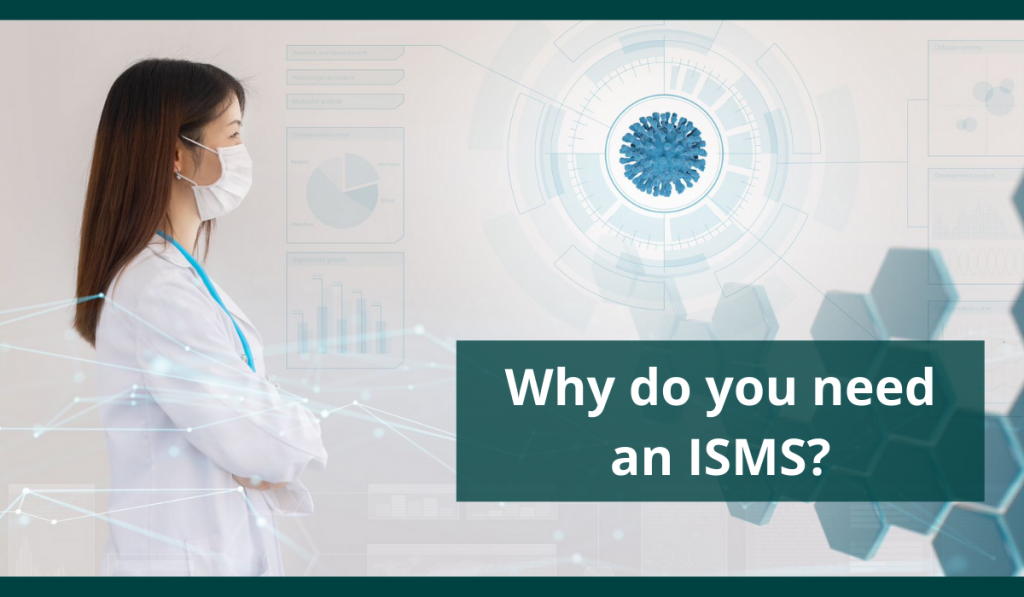
As you are undoubtedly aware, the global pandemic has accelerated the rise of digital health applications and spurred digital innovation in the life sciences sector. The cybersecurity, privacy and compliance challenges presented by this rapid transformation make adopting a risk-based approach to protecting information assets integral to corporate missions and business success.
Medical data is of particular value to cybercriminals, which places organisations that develop digital healthcare software solutions at heightened risk of a data breach, loss of revenue, damaged reputation, operational downtime and legal liability. Biopharmaceutical research and development organisations whose value is derived from intellectual property, also face heightened exposure.
An information security management system (ISMS) is a means to assure stakeholders that your organisation is committed to safeguarding sensitive data by employing a structured approach to managing information risk that aligns with legal, regulatory and business requirements.
Implementing an information security management system allows organisations to reduce the likelihood of cybersecurity and data privacy incidents, optimise information security controls and effectively respond to threats.
A centrally managed framework aligned with international standards for best practices, such as ISO/IEC 27001, the NIST Cybersecurity Framework or the CSA Cloud Controls Matrix, also play a foundational role in helping companies maximise their return on security investment, enhance their reputation and gain an advantage over their competitors.
The post targets business leaders considering embarking on an ISMS implementation or ISO/IEC 27001 certification initiative.

1. What is an Information Security Management System (ISMS)?
We can define an information security management system (commonly abbreviated to “ISMS”) as:
“a structured framework of policies, procedures, processes, practices, controls, roles, responsibilities and resources for the treatment of risks to confidentiality, integrity and availability of information assets, in line with organisational objectives.”
An information security risk assessment is the core component of an ISMS. The goal of an information security risk assessment is to identify, analyse, evaluate, and treat risks to the confidentiality, integrity, and availability of information assets according to stakeholder requirements and the organisation’s business objectives.
An ISMS exists within a predefined scope and includes processes for the appraisal and continual improvement of its effectiveness over time.
2. What are the information security objectives of an ISMS?
A functional definition of information security and its objectives is an essential prerequisite for discussion on information risk management. We can define the term information security as:
“the protection of information assets from unauthorised access, use, modification, disclosure, disruption or destruction, to maintain confidentiality, integrity and availability.”
The three core security objectives of confidentiality, integrity and availability, often referred to as “the C.I.A triad”, represent the primary benefits derived from the implementation of information security controls.
Confidentiality
Confidentiality protects information against access, viewing and disclosure by unauthorised individuals, entities or processes. Confidentiality includes the means for protecting sensitive personal information, commonly referred to as privacy. The most popular mechanism for the provision of confidentiality is data encryption.
Integrity
Data integrity is the protection of information against unauthorised modification or deletion. Data integrity is usually more concerned with the detection of changes, as opposed to prevention. Mechanisms that provide data integrity include checksums, digital certificates, logging, monitoring, and information audit.
Availability
Availability is the protection against denial of access to information. It ensures that information is accessible and usable on-demand by authorised individuals, entities or processes. Mechanisms for availability include redundancy measures to ensure against a single point of failure in a system or application component and protection against Denial of Service (DoS) attacks that attempt to block legitimate traffic by overwhelming network resources with rogue requests.

3. Why should your organisation implement an ISMS?
Implementing a structured framework of policies, procedures, and controls based on a risk assessment and detailed analysis of your organisational context offers the following benefits:
Compliance with legal, regulatory and business requirements
An ISMS requires the organisations to perform a detailed assessment of applicable legal, regulatory and business requirements such as the European General Data Protection Regulation (GDPR), the Swiss Federal Act on Data Protection (FADP) and the Health Insurance Portability and Accountability Act (HIPAA). An established ISMS is a perfect vehicle for ensuring continued alignment.
Reduced information risk
An integral part of an ISMS is to ensure a risk-based approach to the implementation of controls that protect the confidentiality, integrity and availability of critical information assets, which can significantly reduce the probability of a data breach, loss of revenue, damaged reputation, operational downtime and legal liability.
Optimisation of information security controls
One of the outcomes of an ISMS is a set of optimised controls. Information security controls selected based on risk are appropriate in both number and application. Risk-based control selection ensures adequate and cost-effective protection without hindering business operations.
Increased return on security investment
Implementing controls that meet legal, regulatory and contractual obligations and align with organisational objectives will deliver the best “bang for the buck” for your information security budget. The organisation will also reduce the costs associated with responding to multiple security incidents and the financial repercussions of data privacy and regulatory compliance failures.
Clarity on organisational accountability, roles and responsibilities
Establishing an ISMS forces your organisation to assign roles, obligations, and accountability to protect critical information assets, which facilitates steering, direction and control over management system processes.
Promotion of a culture of information security
An ISMS requires leadership, commitment, and an appreciation of cybersecurity and privacy risk at the board level, an essential prerequisite for embedding core principles and awareness into organisational culture.
Certification to international standards for information security management
After implementing an ISMS in your organisation, the next logical step is to certify it to an international standard for information security management, such as ISO/IEC 27001.
Certifying your ISMS to an internationally recognised and externally assured standard conveys to stakeholders that your organisation is credible and trustworthy. It can improve customer confidence, reduce the need for customer audits and help you win new business whilst keeping you one step ahead of uncertified competitors.
Identify the risks in your Information Security Management System with our free ISO 27001 Gap Analysis Checklist.

Related Posts
How to Assess your Certification Readiness with an ISO 27001 Gap Analysis
This post will provide answers to the following fundamental questions concerning ISO 27001 gap analysis…
Schutz für digitale Life Science Businesses: Bedeutung Cybersicherheit
Introduction As a digital life science community member, your business is almost certainly on the…
Warum Patientendaten das ultimative Ziel für Cyberkriminelle sind
Introduction The trend in remote working spurred by the COVID-19 pandemic has demonstrated how much…
What is ISO 27001, and why should we certify?
This post addresses the following questions The post targets business leaders considering embarking on an…





